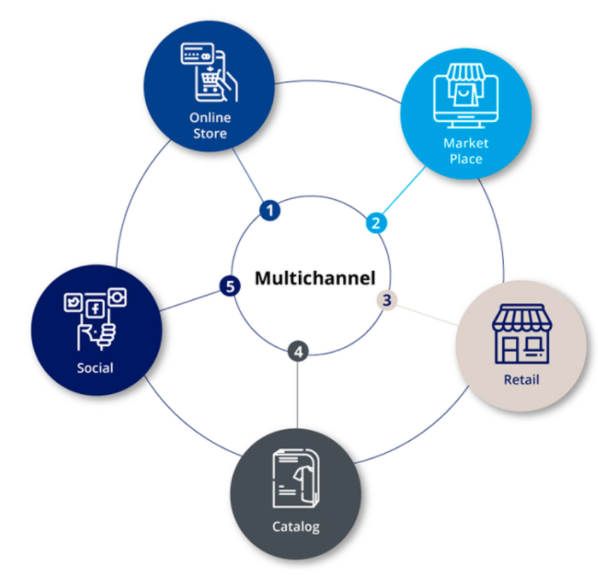Retail Store Ops Assistant (1 years course)
Retail Store Ops Assistant click here
Brief Job Description
Individuals in this position receive, move, store and deliver products whilst working cordially within the
team and retail organization.

Personal Attributes
The individual needs to be physically fit to withstand working in a retail environment whilst being customer responsive towards service delivery
To receive and store goods in retail operations
Description
This OS describes the skills and knowledge required to effectively prepare, receive and store goods in
retail operations.
Scope
The scope covers the following :
The scope covers the following :
• prepare to receive goods
• receive goods
• store goods
Elements and Performance Criteria
Prepare to receive goods
To be competent, the user/individual on the job must be able to:
PC1. Use the stock control system to identify current stock levels, the stock levels needed and any
shortfalls in stock.
PC2. confirm appropriate storage space availability.
PC3. check and confirm that all equipment required for receipt and movement of goods is
available and in good working order.
PC4. complete required paperwork , checking for accuracy and completeness.
PC5. ensure that the area for receiving goods is clean, tidy and free from obstruction and perils.
PC6. report any shortfall in space or malfunction with equipment to supervisor
Receive Goods
To be competent, the user/individual on the job must be able to:
PC7. check that all goods as detailed in the delivery note have been received.
PC8. record refusals accurately following organisational standard operating procedures.
PC9. accurately update stock control systems to reflect receipt of goods.
Store goods
To be competent, the user/individual on the job must be able to:
PC10. confirm storage requirements and conditions for the incoming goods.
PC11. ensure appropriate handling procedures for perishable and non-perishable goods is in place.
PC12. follow all relevant legislation and organisation policies and procedures.
PC13. complete all administrative procedures to ensure appropriate rotation of goods.

Knowledge and Understanding (KU)
The individual on the job needs to know and understand:
KU1. requirements for maintaining security and safety during delivery and storage of goods.
KU2. policies for receiving and storing a range of products including perishable goods.
KU3. administrative procedures required for receiving and storing goods.
KU4. refusal procedures in relation to type of goods being delivered.
KU5. supervisors for reporting product shortages or over supply.
KU6. supervisors for reporting malfunctioning or hazardous handing equipment
KU7. the need to thoroughly prepare for receipt and storage of goods.
KU8. the scope of information required on quantity and type of goods.
KU9. the storage requirements for a range of products types including perishable goods.
KU10. the lifecycle of perishable products in storage (if applicable).
KU11. reporting requirements for shortage of storage space.
KU12. consequences of inaccurate recording and reporting of goods in receipt and storage.
KU13. what equipment is required for the delivery and movement of goods into storage.
KU14. the operations and function of the handling equipment.
KU15. fault finding procedures and reporting requirements.
KU16. work health and safety requirements in the delivery and storage areas.
KU17. security systems in place for loss prevention.
Generic Skills (GS)
User/individual on the job needs to know how to:
GS1. complete documentation accurately
GS2. write simple reports when required
GS3. read information accurately
GS4. read and interpret data sheets
GS5. follow instructions accurately
GS6. use gestures or simple words to communicate where language barriers exist
GS7. use questioning to minimise misunderstandings
GS8. display courteous and helpful behaviour at all times
GS9. make appropriate decisions regarding the responsibilities of the job role
GS10. plan and schedule routines
GS11. build relationships with internal and external customers
GS12. respond to breakdowns and malfunction of equipment
GS13. respond to unsafe and hazardous working conditions
GS14. respond to security breaches
To deliver products to customers
Description
This OS describes the skills and knowledge required to deliver products to customers.
Scope
The scope covers the following :
Elements and Performance Criteria
Delivery of products to customers
To be competent, the user/individual on the job must be able to:
PC1. Use the stock control system to identify current stock levels, the stock levels needed and any
shortfalls in stock.
PC2. check that he/she has the equipment and paperwork needed for the delivery.
PC3. check that he/she has all the delivery details needed and that he/she knows how to get to
the delivery address.
PC4. plan a schedule of deliveries which makes the best use of time and other resources.
PC5. check that he/she has enough fuel for the delivery schedule and follow company procedures
for getting more fuel if needed.

PC6. transport products and equipment safely and securely.
PC7. deliver products at the times agreed with the customer.
PC8. take action in line with company procedures if you expect to arrive at the customers
premises early or late.
PC9. follow company procedures for ensuring that deliveries are left only with individuals who may
legally receive them.
PC10. take action in line with company procedures if no one is available who can receive the
delivery or if the customer rejects the delivery.
PC11. unload orders safely and in ways which protect the orders from damage.
PC12. treat the customer courteously throughout the delivery process.
PC13. update records of delivery and nondelivery promptly and in line with company procedures.
Knowledge and Understanding (KU)
The individual on the job needs to know and understand:
KU1. how to check that he/she has all the products that are due to deliver.
KU2. how to check that he/she has enough fuel for the delivery schedule, and company
procedures for getting more fuel if needed.
KU3. why it is important to deliver products at the times agreed with customers.
KU4. the company procedures to follow if he/she expects to arrive at the customers premises
early or late.
KU5. relevant legal restrictions on who can receive delivery.
KU6. the company procedures to follow when no one is available who can receive the delivery and
when the customer rejects the delivery.
KU7. why it is important to treat customers courteously, and how to do this.
KU8. the records to keep of deliveries and non deliveries and company procedures for completing
these
KU9. how to transport products and equipment safely and securely.
KU10. the importance of planning an efficient delivery schedule and how to do this.
KU11. how to unload goods safely and in ways which protect goods from damage.
Generic Skills (GS)
User/individual on the job needs to know how to:
GS1. complete documentation accurately
GS2. write simple reports when required
GS3. read information accurately
GS4. read and interpret data sheets
GS5. follow instructions accurately
GS6. use gestures or simple words to communicate where language barriers exist
GS7. use questioning to minimise misunderstandings
GS8. display courteous and helpful behaviour at all times
GS9. make appropriate decisions regarding the responsibilities of the job role
GS10. plan and schedule routines
GS11. build relationships with internal and external customers
GS12. respond to breakdowns and malfunction of equipment
GS13. respond to unsafe and hazardous working conditions
GS14. respond to security breaches
To maintain required levels of stock in retail operations
Description
This OS describes the skills and knowledge required to effectively maintain required levels of stock in retail operations.
Scope
The scope covers the following :
The scope covers the following :
• Check stock levels
• Fill shelves
Elements and Performance Criteria
Check stock levels
To be competent, the user/individual on the job must be able to:
PC1. Use the stock control system to identify current stock levels, the stock levels needed and any
shortfalls in stock.

PC2. ask the right person for advice if instructions for checking stock are not clear.
PC3. spot unsaleable stock and promptly tell the right person.
PC4. check stock levels in ways that do not disturb other people any more than needed.
PC5. update stock records accurately and in line with company procedures.
Fill shelves
To be competent, the user/individual on the job must be able to:
PC6. follow instructions for positioning stock.
PC7. promptly ask the right person for advice if instructions for positioning stock are not clear.
PC8. handle stock in ways that protect own and other peoples safety.
PC9. handle stock in ways that protect stock, equipment and premises from being damaged.
PC10. fill shelves in ways that do not disturb other people any more than needed.
PC11. promptly clean and tidy the work area when he/she has finished.
Knowledge and Understanding (KU)
The individual on the job needs to know and understand:
KU1. company procedures for updating stock records.
KU2. company procedures for checking stock levels.
KU3. instructions and procedures for checking stock levels.
KU4. the importance for maintaining accurate and up-to-date stock checks and records.
KU5. how to check stock accurately.
KU6. how to recognise unsaleable stock when checking stock levels.
KU7. how to position stock needs accurately.
KU8. safety risks of handling stocks.
KU9. how to handle stock without risking own or other peoples safety.
KU10. ways of handling stock so that stock, premises and equipment are not damaged.
KU11. the lifecycle of perishable products in storage (if applicable).
KU12. reporting requirements for shortage of storage space.
KU13. the operations and function of handling equipment.
KU14. fault finding procedures and reporting requirements.
KU15. health, safety & environmental requirement.
KU16. security systems in place for loss prevention.
Generic Skills (GS)
User/individual on the job needs to know how to:
GS1. complete receiving and storage documentation accurately.
GS2. write simple reports when required
GS3. read delivery information in order to set up the correct receiving structures and storage
requirements.

GS4. read and interpret data safety sheets for perishable products.
GS5. follow instructions accurately
GS6. use gestures or simple words to communicate where language barriers exist
GS7. use questioning to minimize misunderstandings
GS8. display courteous and helpful behavior at all times
GS9. make appropriate decisions regarding the responsibilities of the job role
GS10. plan and schedule receipt and movement of goods
GS11. build relationships with internal and external customers
GS12. respond to over or under supply of goods.
GS13. respond to multiple deliveries at the same time
GS14. respond to breakdowns and malfunction of equipment.
GS15. respond to unsafe and hazardous working conditions.
GS16. respond to security breaches.
GS17. calculate totals of goods accurately to determine over or under goods.
GS18. determine the impact of any discrepancy and action as appropriate.
To maintain adequate stocks levels for sale
Description
This OS describes the skills and knowledge required to effectively maintain adequate stocks levels for sale.
Elements and Performance Criteria
Check the level of stock on sale
To be competent, the user/individual on the job must be able to:
PC1. Use the stock control system to identify current stock levels, the stock levels needed and any
shortfalls in stock.
PC2. Check stock so that there will be enough time to replace stocks before they run out.
PC3. Check stock levels at suitable intervals.
PC4. Inform promptly when stock needs replacing.
PC5. Notice when stock has passed its expiry date and promptly remove it from sale and update
the stock control system.
Replenish stock on sale
To be competent, the user/individual on the job must be able to:
PC6. Order enough stock to maintain the correct levels.
PC7. Prepare stock for sale within the time allowed.
PC8. Arrange for stock to be moved to the sales floor when it is needed.
PC9. Rotate stock correctly and with the least possible disturbance to other people.
PC10. Follow company procedures for getting rid of packaging waste.
PC11. Update the stock control system promptly, accurately and completely.
PC12. Notice changes in demand for stock and decide what stock levels are suitable.
PC13. Suggest realistic changes and give reasons for your recommendations.
Knowledge and Understanding (KU)
The individual on the job needs to know and understand:
KU1. factors that can affect demand for stock, and how to work out how often to check stock levels.
KU2. how to use the stock control system to identify current stock levels, the stock levels needed
and any shortfalls in stock.
KU3. how to identify stock with expired date codes.
KU4. how to update the stock control system to reflect changes in stock levels.
KU5. company procedures for getting rid of packaging waste.
KU6. how to regularly check demand for stock.
KU7. how to use the stock control system to identify the types and quantities of stock to order.
KU8. how to prepare and send orders for stock accurately and at the right times.
Generic Skills (GS)
User/individual on the job needs to know how to:
GS1. complete documentation accurately
GS2. write simple reports when required
GS3. read delivery information in order to set up the correct receiving structuresand storage
requirements.
GS4. read and interpret data safety sheets for perishable products.
GS5. follow instructions accurately.
GS6. use gestures or simple words to communicate where language barriers exist
GS7. use questioning to minimize misunderstandings
GS8. display courteous and helpful behavior at all times

GS9. make appropriate decisions regarding the responsibilities of the job role
GS10. plan and schedule receipt and movement of goods.
GS11. build relationships with internal and external customers
GS12. respond to over or under supply of goods.
GS13. respond to multiple deliveries at the same time
GS14. respond to breakdowns and malfunction of equipment.
GS15. respond to unsafe and hazardous working conditions.
GS16. respond to security breaches.
GS17. calculate totals of goods accurately to determine over or under goods.
GS18. determine the impact of any discrepancy and action as appropriate.
To Maintain Health and Safety
Description
This OS describes the skills and knowledge required to maintain health and safety.
Elements and Performance Criteria
Identify and report accidents and emergencies
To be competent, the user/individual on the job must be able to:
PC1. notice and correctly identify accidents and emergencies.
PC2. get help promptly and in the most suitable way.
PC3. follow company policy and procedures for preventing further injury while waiting for help to
arrive.
PC4. act within the limits of his/her responsibility and authority when accidents and emergencies
arise.
PC5. promptly follow instructions given by senior staff and the emergency services.
Protect health and safety as you work
To be competent, the user/individual on the job must be able to:
PC6. follow company procedures and legal requirements for reducing health and safety risks as
far as possible while working.
PC7. use safety equipment correctly and in the right situations.
PC8. get advice and help from the right people when he/she concerned about his ability to work
safely.
PC9. take suitable safety measures before lifting to protect himself/herself and other people.
Lift and handle goods safely
To be competent, the user/individual on the job must be able to:
PC10. use approved lifting and handling techniques.
PC11. check that any equipment he/she needs to use is fit for use.
PC12. use lifting and handling equipment in line with company guidelines and manufacturers
instructions.
PC13. plan a safe and efficient route for moving goods.
PC14. make sure that he/she understands his/her own responsibilities when he/she asks others to
help in lifting and handling operations.
Knowledge and Understanding (KU)
The individual on the job needs to know and understand:
KU1. the types of accident and emergency that tend to happen in stores and why they happen.
KU2. getting help in the event of an accident or emergency.
KU3. action he/she can safely and usefully take while waiting for help to arrive.
KU4. health and safety risk that can arise in a store environment.
KU5. company procedures and legal requirements for reducing health and safety risks as far as
possible while working.
KU6. following health and safety procedures.
KU7. safety equipment to be used and why it is required.
KU8. what he/she can lift safely.
KU9. weight of the loads he/she has to lift.
KU10. company guidelines for not lifting more than safe loads.
KU11. planning his/her route when moving goods including the types of obstacles to look for and
how to remove or avoid them.
KU12. company guidelines and manufacturers instructions for using lifting and handling equipment.
KU13. approved techniques for safe handling and lifting.
KU14. approved procedures for using safety equipment.
Generic Skills (GS)
User/individual on the job needs to know how to:
GS1. complete documentation accurately
GS2. write simple reports when required
GS3. read information accurately
GS4. read and interpret data sheets
GS5. follow instructions accurately
GS6. use gestures or simple words to communicate where language barriers exist
GS7. use questioning to minimise misunderstandings
GS8. display courteous and helpful behaviour at all times
GS9. make appropriate decisions regarding the responsibilities of the job role
GS10. plan and schedule routines
GS11. build relationships with internal and external customers
GS12. respond to breakdowns and malfunction of equipment
GS13. respond to unsafe and hazardous working conditions
GS14. respond to security breaches
To create a positive image of self & organization in the
customer’s mind
Description
This OS describes the skills and knowledge required to create a positive image of self & organisation in the customers mind
Scope
The scope covers the following :
Establish effective rapport with customers
Respond appropriately to customers
Communicate information to customers
Elements and Performance Criteria
Establish effective rapport with customers
To be competent, the user/individual on the job must be able to:
PC1. meet the organisations standards of appearance and behaviour
PC2. greet customers respectfully and in a friendly manner
PC3. communicate with customers in a way that makes them feel valued and respected
PC4. identify and confirm customers expectations
PC5. treat customers courteously and helpfully at all times
PC6. keep customers informed and reassured
PC7. adapt appropriate behaviour to respond effectively to different customer behaviour
Respond appropriately to customers
To be competent, the user/individual on the job must be able to:
PC8. respond promptly to a customer seeking assistance
PC9. select the most appropriate way of communicating with customers
PC10. check with customers to ensure complete understanding of their expectations
PC11. respond promptly and positively to customers’ questions and comments
PC12. allow customers time to consider his/her response and give further explanation when
appropriate
Communicate information to customers
To be competent, the user/individual on the job must be able to:
PC13. quickly locate information that will help customers
PC14. give customers the information they need about the services or products offered by the
organization
PC15. recognize information that customers might find complicated and check whether they fully
understand
PC16. explain clearly to customers any reasons why their needs or expectations cannot be met
Knowledge and Understanding (KU)
The individual on the job needs to know and understand:
KU1. organizations standards for appearance and behavior
KU2. organizations guidelines for how to recognize what customers want and respond appropriately
KU3. organizations rules and procedures regarding the methods used for communication
KU4. how to recognize when a customer is angry or confused
KU5. organizations standards for timeliness in responding to customer questions and requests for
information
Generic Skills (GS)
User/individual on the job needs to know how to:
GS1. complete documentation accurately
GS2. write simple reports when required
GS3. read information accurately
GS4. read and interpret data sheets
GS5. follow instructions accurately
GS6. use gestures or simple words to communicate where language barriers exist
GS7. use questioning to minimise misunderstandings
GS8. display courteous and helpful behaviour at all times
GS9. make appropriate decisions regarding the responsibilities of the job role
GS10. plan and schedule routines
GS11. build relationships with internal and external customers
GS12. respond to breakdowns and malfunction of equipment
GS13. respond to unsafe and hazardous working conditions
GS14. respond to security breaches
To work effectively in a retail team
Description
This OS describes the skills and knowledge required to work effectively within and with teams across a
Retail environment
Scope
The scope covers the following :
Support the work team
Maintain personal presentation
Develop effective work habits
Review changes that promote continuous improvement in customer service
Elements and Performance Criteria
Support the work team
To be competent, the user/individual on the job must be able to:
PC1. display courteous and helpful behaviour at all times
PC2. take opportunities to enhance the level of assistance offered to colleagues
PC3. meet all reasonable requests for assistance within acceptable workplace timeframes
PC4. complete allocated tasks as required
PC5. seek assistance when difficulties arise
PC6. use questioning techniques to clarify instructions or responsibilities
PC7. identify and display a non discriminatory attitude in all contacts with customers and other
staff members
Maintain personal presentation
To be competent, the user/individual on the job must be able to:
PC8. observe appropriate dress code and presentation as required by the workplace, job role and
level of customer contact
PC9. follow personal hygiene procedures according to organisational policy and relevant
legislation
Develop effective work habits
To be competent, the user/individual on the job must be able to:
PC10. interpret, confirm and act on workplace information, instructions and procedures relevant to
the particular task
Review changes that promote continuous improvement in customer service
To be competent, the user/individual on the job must be able to:
PC11. interpret, confirm and act on legal requirements in regard to anti- discrimination, sexual
harassment and bullying
PC12. ask questions to seek and clarify workplace information
PC13. plan and organise daily work routine within the scope of the job role
PC14. prioritise and complete tasks according to required timeframes
PC15. identify work and personal priorities and achieve a balance between competing priorities
Knowledge and Understanding (KU)
The individual on the job needs to know and understand:
KU1. the policies and procedures relating to the job role
KU2. the value system of the organisation
KU3. employee rights and obligations
KU4. the reporting hierarchy and escalation matrix
KU5. ask questions to identify and confirm requirements
KU6. follow routine instructions through clear and direct communication
KU7. use language and concepts appropriate to cultural differences
KU8. use and interpret non-verbal communication
KU9. the scope of information or materials required within the parameters of the job role
KU10. the consequences of poor team participation on job outcomes
KU11. work health and safety requirements
Generic Skills (GS)
User/individual on the job needs to know how to:
GS1. complete workplace documentation accurately
GS2. read and interpret workplace documentation
GS3. read and interpret organisational policies and procedures
GS4. follow instructions accurately
GS5. use gestures or simple words to communicate where language barriers exist
GS6. use questioning to minimise misunderstandings
GS7. display courteous and helpful behaviour at all times
GS8. plan and schedule time personal management
GS9. build relationships with internal and external team members
GS10. respond to ambiguity in directions and instructions
GS11. respond to breakdown in relationships within the team
GS12. respond to breakdowns in communications with other teams
To work effectively in an organisation
Description
This OS describes the skills and knowledge required to work effectively in an organisation
Scope
The scope covers the following :
Support effective team working
Help plan and organise own learning
Help others learn
Elements and Performance Criteria
Support effective team working
To be competent, the user/individual on the job must be able to:
PC1. share work fairly with colleagues, taking account of own and others preferences, skills and
time available
PC2. make realistic commitments to colleagues and do what has been promised
PC3. let colleagues know promptly if he/she will not be able to do what has been promised and
suggest suitable alternatives
PC4. encourage and support colleagues when working conditions are difficult
PC5. encourage colleagues who are finding it difficult to work together to treat each other fairly,
politely and with respect
PC6. follow the companys health and safety procedures while working
Help plan and organise own learning
To be competent, the user/individual on the job must be able to:
PC7. discuss and agree with the right people goals that are relevant, realistic and clear
PC8. identify the knowledge and skills needed to achieve his/her goals
PC9. agree action points and deadlines that are realistic, taking account of past learning
experiences and the time and resources available for learning
PC10. regularly check his/her progress and, when necessary, change the way of working
PC11. ask for feedback on his/her progress from those in a position to give it, and use their
feedback to improve his/her performance
Help others learn
To be competent, the user/individual on the job must be able to:
PC12. encourage colleagues to ask him/her for work-related information or advice that he/she is
likely to be able to provide
PC13. notice when colleagues are having difficulty performing tasks at which you are competent,
and tactfully offer advice
PC14. give clear, accurate and relevant information and advice relating to tasks and procedures
PC15. explain and demonstrate procedures clearly, accurately and in a logical sequence
PC16. encourage colleagues to ask questions if they don’t understand the information and advice
given to them
PC17. give colleagues opportunities to practice new skills, and give constructive feedback
PC18. check that health, safety and security are not compromised when helping others to learn
Knowledge and Understanding (KU)
The individual on the job needs to know and understand:
KU1. teams purpose, aims and targets
KU2. responsibility for contributing to the teams success
KU3. colleagues roles and main responsibilities
KU4. the importance of sharing work fairly with colleagues
KU5. the factors that can affect own and colleagues willingness to carry out work, including skills
and existing workload
KU6. the importance of being a reliable team member
KU7. factors to take account of when making commitments, including your existing workload and
the degree to which interruptions and changes of plan are within your control
KU8. the importance of maintaining team morale, the circumstances when morale is likely to flag,
and the kinds of encouragement and support that are likely to be valued by colleagues
KU9. the importance of good working relations, and techniques for removing tension between
colleagues
KU10. the importance of following the company’s policies and procedures for health and safety,
including setting a good example to colleagues
KU11. who can help set goals, help plan your learning, and give you feedback about your progress
KU12. how to identify the knowledge and skills he/she will need to achieve his/her goals
KU13. how to check his/her progress
KU14. how to adjust plans as needed to meet goals
KU15. how to ask for feedback on progress
KU16. how to respond positively
KU17. how to help others to learn in the workplace
KU18. how to work out what skills and knowledge he/she can usefully share with others
KU19. health, safety and security risks that are likely to arise when people are learning on the job,
and how to reduce these risks
Generic Skills (GS)
User/individual on the job needs to know how to:
GS1. complete documentation accurately
GS2. write simple reports when required
GS3. read information accurately
GS4. read and interpret data sheets
GS5. follow instructions accurately
GS6. use gestures or simple words to communicate where language barriers exist
GS7. use questioning to minimise misunderstandings
GS8. display courteous and helpful behaviour at all times
GS9. make appropriate decisions regarding the responsibilities of the job role
GS10. plan and schedule routines
GS11. build relationships with internal and external customers
GS12. respond to breakdowns and malfunction of equipment
GS13. respond to unsafe and hazardous working conditions
GS14. respond to security breaches








